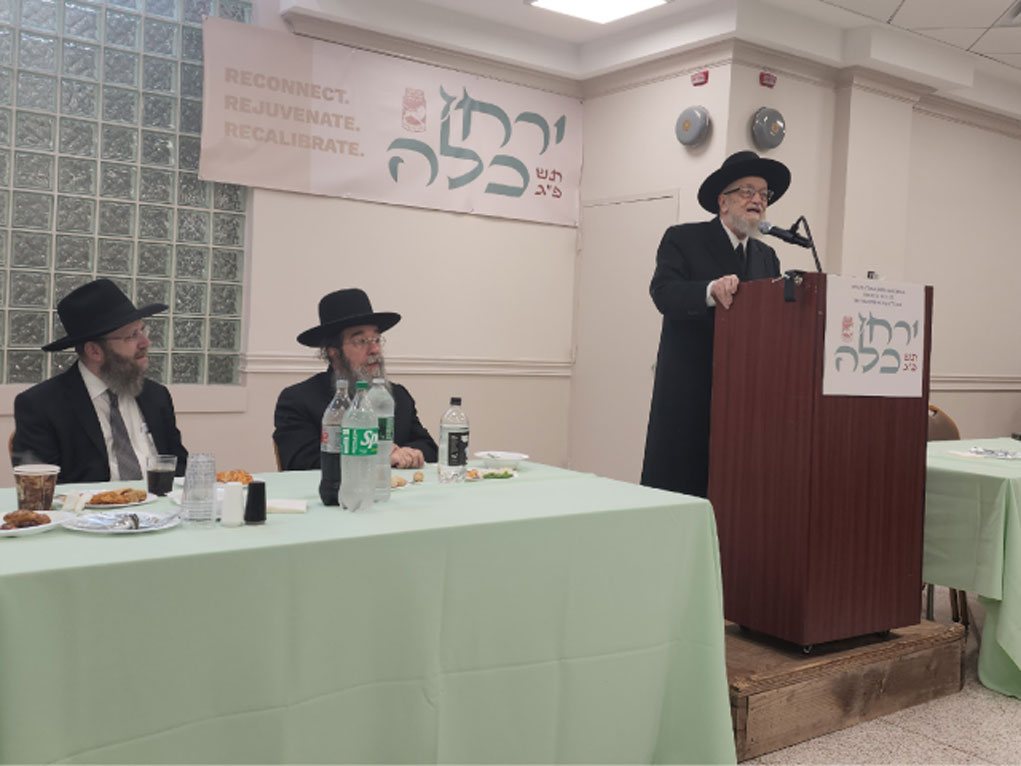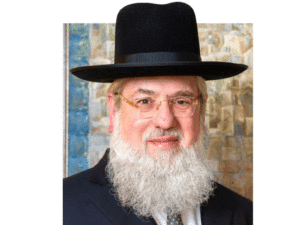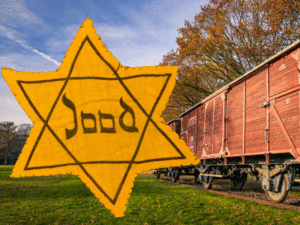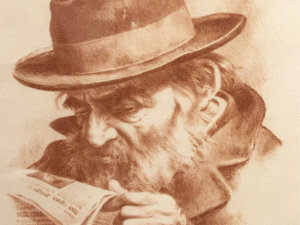The popular writer Thomas Wolf famously wrote that “You can’t go home again.” What he ostensibly meant by this was that as much as we sometimes want to return to someplace from our youth, it’s actually impossible. Even if the same people are still there, they will probably be different than you remember them. Even if some of them have remained the same or are somewhat similar, the dynamics of life are such that you will just be disappointed, so don’t even try. As always, we Torah Yidden look to our own sources and wisdom to test if a secular statement carries any truth.
My own focus at the moment is not on a long trip or even exploring a neglected childhood haunt. I have actually been back to my old bais medrash, Yeshiva Mesivta Rabbeinu Chaim Berlin, many times. However, last Sunday was the very first time I went back to Coney Island Avenue in Brooklyn to deliver a shiur or drasha. I was to be the guest speaker at a Yarchei Kallah attended by hundreds of men who were learning a joint sugya for two beautiful days, with shiurim from several generations of rabbeim and roshei yeshiva. One of the special aspects of this particular event was that some of the speakers and maggidei shiur were fathers and sons, sealing the character of mesorah and hemshech with 48 hours of limud haTorah. For me, many of my formative post-high school years were spent in that hallowed building. Thousands of days and nights, the cacophony of hundreds of chavrusos yelling peshatim and chiddushim to each other, powerful tefillos rising majestically to Shomayim and the profound zechus of walking past the rosh yeshiva to wish and receive the brocha of a gutten Shabbos or Yom Tov all competed in my brain and heart before I could even utter a word. My rebbi, Rav Yitzchok Hutner, was no longer there, and his loyal and beloved talmud muvhak, Rav Aharon Schechter, is unfortunately not well and could not lend his exquisite hadras ponim to the occasion.
Yet, connecting with old chaveirim – and amazingly some of their sons and grandsons – made it more than a homecoming. It allowed me to share a thought from my rebbi that I felt defined this particular Yarchei Kallah and by extension all such events in Klal Yisroel across the globe.
Last Shabbos, Parshas Shekolim, I quoted a vort from Rav Aharon Hagadol of Karlin about the word machatzis, the half shekel that is the subject of the special laining. He points out that in the word machatzis, there is a tzaddik and the letters to either side spell chai, life. On the other hand, the letters far from the tzaddik spell meis. He explains that those who attach themselves to the tzaddik receive life, but those who distance themselves tragically bring about their own demise. The rebbe references the famous posuk of “Ve’atem hadeveikim baHashem…chaim…,” those who cleave to Hashem are alive. He recalls that the posuk (Devorim 11:22) commands us to cleave to Hashem. However, Chazal (Yalkut, Eikev 873) ask: How can one cleave to Hashem? Isn’t He a burning fire? Rather, one should cleave to the sages and their disciples. This is mirrored in the word for half a shekel.
Speaking in my alma mater to talmidim and talmidim of talmidim of Rav Hutner, I was able to share our rebbi’s own approach to this posuk and Chazal. Rav Hutner (Pachad Yitzchok, Shavuos, Maamar 18:7; Sefer Hazikaron, page 108) asks: We can readily understand that if we cannot cleave directly to Hashem, His holy ones can provide a safer surrogate. However, what place do the talmidim occupy in this process? Surely if we have the teachers, why do we need their students? Here the rosh yeshiva provides a double answer. First of all, he defines a yeshiva for us. It is not simply a bais medrash where people learn. That is fine too. But a yeshiva goes much further. It is the embodiment of the transmission of the Torah. For that we require both a rebbi and a talmid. The result of that sacred act is bringing the Shechinah itself into our midst.
Relating this to a Yarchei Kallah, I quoted verbatim from the Pachad Yitzchok (page 135): “The deveikus here comes from the chaburah, which is made up of chachomim and their talmidim.” Thus, the rosh yeshiva defines a yeshiva – all yeshivos – as equally being made up of those who teach and those who receive the mesorah from their rabbeim, for the mystical moment of Torah transmission creates a home for the Shechinah to rest amongst us.
Rav Hutner goes on to teach us the right and the wrong way to choose and retain a rebbi. At the Yarchei Kallah, we were celebrating not a one time or one class rebbi, but the unique institution of a rebbi for life. Rav Hutner turned a common fallacy on its head and gave us guidelines for eternity. “A talmid does not become a student because he recognizes the immense qualities of his rebbi,” he thundered. “He recognizes his rebbi’s greatness because he is a talmid.”
I took the liberty of interpolating my own editorial. It is impossible for a real talmid to evaluate his rebbi. The whole point is that the rebbi is above and beyond the student and the student feels unworthy of becoming a talmid. We return to the rosh yeshiva. “If so,” he asks, “what is the criterion based upon for him to choose this particular teacher?” The answer is that “it is in the pleasure he feels from being in the presence of and learning from this man.” This lifetime connection flows from the immense and sublime taanug which the recipient cannot receive anywhere else.
Rav Hutner proved his point from an enigmatic parsha in Tanach. Elisha is chasing after Eliyahu, begging to allow him to become his disciple after bidding farewell to his parents. Eliyahu answers, “Go return, for what have I done to you?” (Melachim I 19:20). Since Elisha does not respond, it is clear that a student should not and cannot provide a logical explanation for why he wishes to accept someone as his rebbi. At this point, silence is the only answer. Adding once again to what my rebbi wrote, we must cite the amazing relationship between Rav Elchonon Wasserman and his rebbi, the Chofetz Chaim. Rav Elchonon was already a grey-bearded gadol hador, rosh yeshiva of Baranovitch and author of many halacha seforim. Yet, he virtually counted the Chofetz Chaim’s words when he spoke and spent all of Elul and beyond with his rebbi, away from his family and yeshiva. This was a true talmid, but it didn’t at all preclude his being one of the most successful and charismatic of rabbeim simultaneously.
So, with all due respect to Thomas Wolf, we can go home again, especially if that home is an achsanya of Torah. Then, even if some of the faces have changed, the derech continues, the mesorah is unbroken, and one has the satisfaction and reassurance that what was still is and im yirtzeh Hashem will continue to be. This is undoubtedly the true meaning of netzach Yisroel lo yeshaker – “The Eternal One of Yisroel does not lie” (Shmuel I 15:29). That which is Torah-true doesn’t change and can continue to be revisited forever. Interestingly, a number of Rishonim write that the greatness of the Gaonim was that they still occupied the seats of Torah where the Amoraim had taught Torah. Their kedusha and taharah spilled over into the generations after them, as do our yeshivos, which are based upon the immutable principles of all the generations back to Moshe Rabbeinu at Har Sinai. That is the best homecoming for us all.








